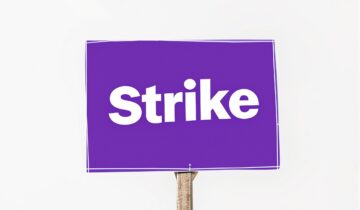Preparing for a general strike requires careful planning, organization, and coordination. It’s a large-scale action designed to disrupt normal economic and social functioning, often aiming to pressure authorities to make political or social changes. Here’s a breakdown of the steps involved:
1. Define Clear Objectives
- Identify the Cause: A general strike should have a clear, focused goal (e.g., workers’ rights, political reform, environmental justice).
- Set Specific Demands: Articulate what the movement wants to achieve (e.g., policy changes, improved labor conditions, or government action).
2. Build a Broad Coalition
- Engage Multiple Groups: Unify workers, activists, community organizations, and other social movements. A general strike is more likely to succeed when a broad cross-section of society participates.
- Allies and Solidarity: Secure support from trade unions, grassroots organizations, and advocacy groups that will mobilize members and offer resources (financial, logistical, or legal).
3. Coordinate Logistics
- Timing: Decide on the timing of the strike, considering the political climate, upcoming events, and key points where the strike can have the most impact.
- Communication Infrastructure: Establish secure communication channels (social media, encrypted messaging apps, public announcements) to keep everyone informed and coordinated.
- Transportation and Supplies: Organize support for those participating (food, transport, and medical supplies). Anticipate the needs of those who will be involved in protests, picket lines, or direct actions.
4. Legal Considerations
- Know the Law: Understand the legal implications of a general strike, as it may involve labor laws, right to protest, or other regulations depending on the region.
- Protect Strikers: Work with legal advisors to ensure that participants are protected from retaliation or arrest, especially if the strike is large and high-profile.
5. Mobilize Participants
- Awareness Campaigns: Raise awareness through posters, flyers, social media, public events, and other outreach activities.
- Involve Key Sectors: Focus on key industries and workers who can maximize the strike’s impact (e.g., transportation, education, healthcare, and other essential services).
- Publicize the Strike’s Importance: Use media, testimonials, and interviews to make the case to the public about why the strike is necessary.
6. Plan for Disruption
- Target Areas of Impact: Focus on disrupting essential services, major economic hubs, or government operations to create leverage.
- Alternative Actions: In case a full general strike isn’t possible, consider partial strikes or rolling actions in different sectors or regions.
7. Organize Picket Lines and Direct Action
- Picketing: Plan physical picket lines and actions at strategic locations (e.g., workplaces, government offices, public transportation hubs).
- Nonviolent Direct Action: Organize peaceful actions such as marches, sit-ins, and symbolic demonstrations to amplify the strike’s message.
8. Prepare for Backlash
- Expect Opposition: Authorities, businesses, and other stakeholders may try to undermine or suppress the strike. Have a plan to deal with opposition, including potential arrests, violence, or media campaigns against the movement.
- Organize Solidarity Support: Engage in solidarity actions such as fundraisers for legal defense or mutual aid funds to support those affected by retaliation.
9. Stay Flexible and Adaptable
- Adjust Strategies: Be prepared to adapt if things don’t go as planned. The response from employers or the government can influence the next steps in the campaign.
- Maintain Momentum: Ensure that participants stay motivated and that the public attention remains on the cause after the strike.
10. Follow-Up and Long-Term Strategy
- Post-Strike Plans: After the strike, continue applying pressure with advocacy, negotiations, or follow-up actions to achieve the demands.
- Evaluate Success: Assess the impact of the strike and refine future strategies, whether through additional strikes or other forms of activism.
Preparing for a general strike is complex and requires broad support, significant organizational effort, and a clear focus on the demands. By aligning a diverse group of people and resources, creating a clear message, and ensuring logistical coordination, a movement can maximize the effectiveness of the strike.
If you are promoting a protest, general strike or economic boycott, please submit your information at editor@generalstrike.info




 No products in the cart.
No products in the cart. 